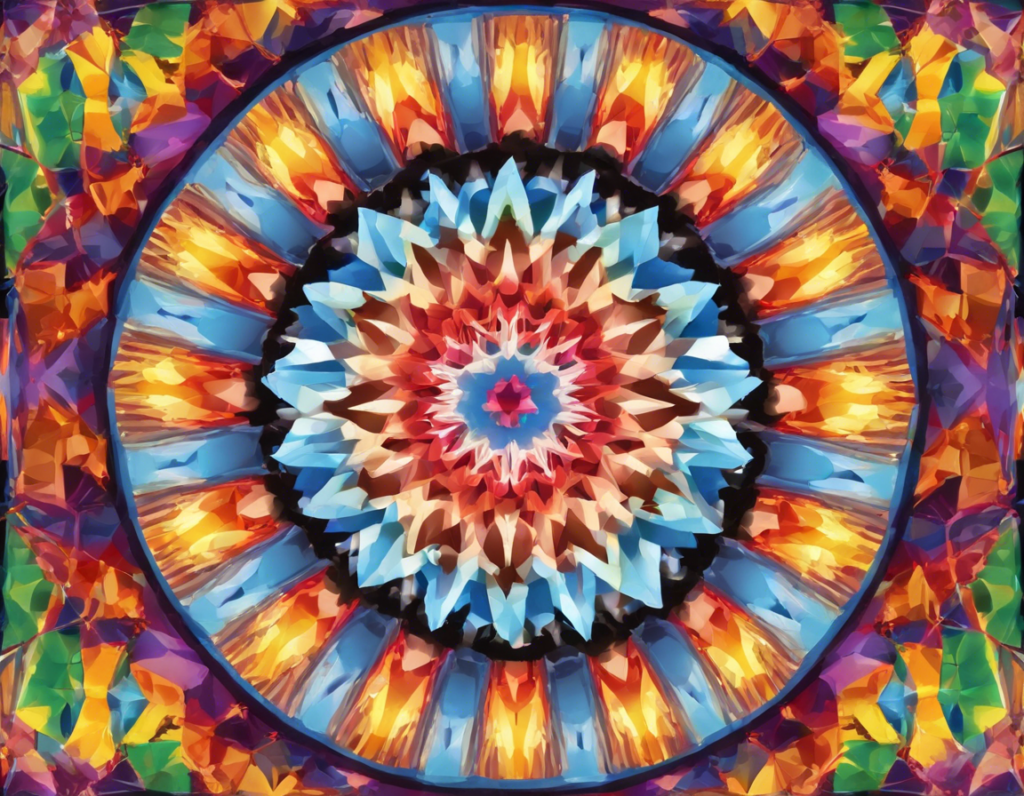Have you ever been fascinated by the intricate patterns and vibrant colors created by a kaleidoscope? These mesmerizing optical instruments have the magical ability to transform simple objects into beautiful and complex designs with just a twist. While kaleidoscopes are readily available for purchase, there is something truly special about creating your own. In this comprehensive guide, we will walk you through the process of constructing a kaleidoscope from scratch, allowing you to unleash your creativity and witness the wonder of light and color in a whole new way.
Understanding the Basics of a Kaleidoscope
Before diving into the construction process, let’s first understand how a kaleidoscope works. A typical kaleidoscope consists of three essential components: a tube, reflective material, and transparent objects (such as glass beads, beads, or colored paper). When you look through the viewing end of a kaleidoscope and rotate it, the objects inside create a symmetrical pattern due to the reflections off the mirrors inside the tube. This simple yet ingenious design is what gives kaleidoscopes their unique visual appeal.
Materials Needed:
- Cardboard tube: This will serve as the main body of your kaleidoscope.
- Mirrored sheets or Mylar film: To create the reflective surfaces inside the tube.
- Transparent objects: Choose a variety of colorful beads, buttons, or glass pieces.
- Clear glass or acrylic disc: To seal one end of the tube.
- End cap or cardboard circle: To seal the other end of the tube.
- Glue: To secure the mirrors and other components in place.
- Decorative materials: Such as paint, stickers, or washi tape for personalization.
Step-by-Step Construction Guide:
-
Prepare the Tube: Start by cutting the cardboard tube to your desired length. Ensure that the tube is clean and free from any debris.
-
Attach the Mirrors: Cut the mirrored sheets or Mylar film to fit the inner walls of the tube. You can create a triangle shape with three equal sides to form a prism-like effect, or opt for a simpler design with two mirrored walls.
-
Add the Transparent Objects: Carefully place the transparent objects inside the tube on top of the mirrors. Ensure that they are evenly distributed for a balanced visual effect.
-
Seal the Ends: Use the clear glass or acrylic disc to seal one end of the tube. This will act as the viewing end of the kaleidoscope. Seal the other end with an end cap or cardboard circle.
-
Decorate the Exterior: Let your creativity shine by decorating the exterior of the kaleidoscope with paint, stickers, or other embellishments. Personalize it to make it uniquely yours.
-
Test and Enjoy: Once the glue has dried and the components are securely in place, hold your kaleidoscope up to the light and give it a gentle twist. Marvel at the mesmerizing patterns and colors that come to life before your eyes.
Tips for a Stunning Kaleidoscope:
- Experiment with different shapes and sizes of mirrors to create unique patterns.
- Use a variety of transparent objects to add depth and dimension to your designs.
- Ensure proper alignment of the mirrors to achieve symmetrical reflections.
- Keep the interior clean to prevent dust or debris from distorting the images.
- Adjust the tightness of the end caps to ensure smooth rotation without any wobbling.
Frequently Asked Questions (FAQs)
Q: Can I use recycled materials to construct a kaleidoscope?
A: Absolutely! Cardboard tubes from paper towel rolls or sturdy packaging can be repurposed for your kaleidoscope project.
Q: What age group is suitable for constructing a kaleidoscope?
A: While adult supervision may be needed for younger children, constructing a kaleidoscope can be a fun and educational activity for all ages.
Q: How can I enhance the visual effects of my kaleidoscope?
A: Experiment with different light sources, such as natural sunlight or LED lights, to see how they interact with the transparent objects inside the kaleidoscope.
Q: Can I make a portable kaleidoscope for on-the-go enjoyment?
A: Yes! Consider using a smaller, more compact tube and lightweight materials for a portable kaleidoscope that can be easily carried in your bag or pocket.
Q: What are some creative ways to display or showcase my kaleidoscope?
A: Place your kaleidoscope near a window to capture natural light, or use a display stand to showcase it as a decorative piece in your home or office.
Whether you are a crafting enthusiast, a science lover, or simply someone who appreciates the beauty of art and optics, constructing your own kaleidoscope is a rewarding experience. By following this DIY guide and unleashing your creativity, you can create a magical visual masterpiece that will delight and inspire all who behold it. So gather your materials, get ready to explore the mesmerizing world of light and color, and embark on a journey of creativity and wonder with your handmade kaleidoscope.
